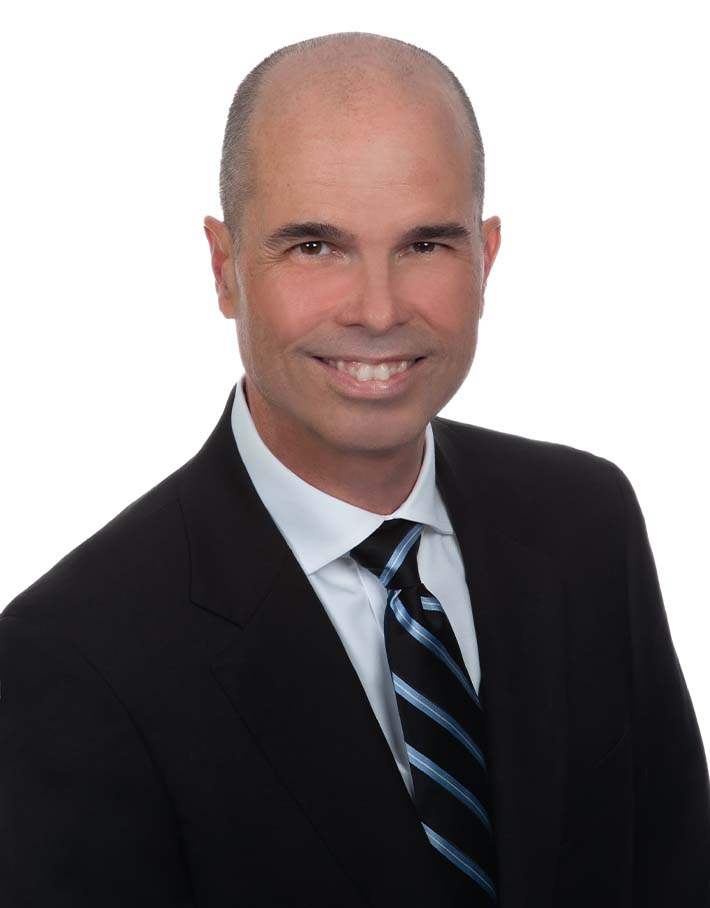Consolidated Audit Trail – Are Your Ready for Phase 2e?
By Buddy Doyle and Ralph Magee
Subscribe to our original industry insights
Phase 2e of CAT is a complicated linkage event and there are things firms should be doing to prepare. In today’s podcast, Oyster CEO, Buddy Doyle, and Oyster’s CAT expert Ralph Magee talk about the challenges our clients are seeing and things firms should be doing to be ready for this next phase.
Transcript
Transcript provided by Temi transcript services
Libby Hall: Hi, everyone. Welcome to today’s Oyster Stew podcast. I’m Libby Hall, Director of Communications for Oyster. At the time we recorded this podcast on May 26th of 2022, compliance for Phase 2e of FINRA’s Consolidated Audit Trail (CAT) was scheduled to take effect on July 11th. Later that day, FINRA CAT announced a delay to the full compliance date for the Customer and Account Information System (CAIS) to a date yet to be announced in the 4th quarter of 2022.
It is important for Industry Members to keep in mind that they will still be required to certify for production system access by July 11th and will likely have additional interim reporting requirements before the new deadline.
This is a complicated linkage event and there are things firms should be doing to prepare. In today’s podcast, Oyster CEO, Buddy Doyle, and Oyster’s CAT expert, Ralph Magee talk about the challenges our clients are seeing and things firms should be doing to be ready for this next phase. So let’s get started.
Buddy Doyle: All right. Thanks for joining us, everybody. I’m Buddy Doyle. I’m the chief executive officer of Oyster consulting and I’m pleased to be joined today by Ralph Magee. One of our consultants who has boy, Ralph seems like you and I have been working together for a very long time, but I think that’s because it goes back to more than one company.
Ralph Magee: True story.
Buddy Doyle:
Yeah. But I’m excited to be doing this with you and Ralph. You’ve been sort of leading the charge on CAT since there was such a thing as, as the CAT and maybe you can give our listeners a little bit of a look back at some of the phases that have come in to play just to kind of catch everybody up on where we are on the implementation.
Ralph Magee: Sure. You had mentioned us working together for a long time. It seems like also a long time we’ve been talking about the Consolidated Audit Trail as well, dating back to early 2008 and 2009 when the idea of this came about to replace OATS. And certainly there was a lot of industry planning and implementation that went into what will now be the largest financial database ever created in the world in existence, so a lot of industry coordination. You had mentioned the phased in implementation of the Consolidated Audit Trail that went from phase 2A all the way through phase 2D which concluded in December of last year. 2A and 2B were pretty much introductory levels of data, integrity and ingestion, making sure that you had the right fields populated for the required fields that were reported to CAT.
And then it progressed into linkage amongst those events first from a firm perspective. And then from an industrywide perspective, after that with Phase 2C, and then we’ve completed the transaction reporting to CAT reporting in December with Phase 2D. That also brought into account a few more products in that we included the complex options, multi leg option events that have been now introduced into CAT reporting. The next implementation to go on tap for CAT is going to be Phase 2E that comes into compliance on July 11th later this year. That will include the customer and account information perspective. That’ll allow the industry to follow the folks that make decisions on the accounts, the folks that introduce these orders into the audit trail. They’ll be able to tick and tie that information all the way back to the customer level, which is a pretty complicated linkage event from a CAT perspective.
Buddy Doyle: And so, Ralph, I think it’s interesting. The SEC has taken the approach to do this in phases. And I can’t see how you couldn’t do this in phases, given how difficult it is to really track the life cycle of an order and execution throughout the marketplace for every product and every circumstance. So it makes a lot of sense, but I think the phased in approach also has some challenges as it comes to managing through change and implementation processes and testing and updating your procedures. Where are clients that you’re working with now, as it comes to sort of the maturity of their change cycles, and how far along are they with good solid procedures about how they do what they do?
Ralph Magee: So they’re, in some ways lagging the industry. I think the approach, the phased implementation approach was, quite frankly, well executed across the board and the industry participation was nothing short of superb. The interaction between the regulatory body, the plan providers, and the industry members, I think, was at all-time high. But to your point, about where are clients and where do we see folks positioned now, is that they’re a little bit behind the curve. And I think there’s some false sense of security that went along with that plan implementation. And I think it’s caught a few firms off guard. I think we’ll continue to see some firms that were caught off guard by that. They’ve been so busy following this implementation, planning for the implementation staffing for this implementation, that sometimes we’ve found that our clients are lagging behind on the actual policies and procedures that they have in place. What does that policy and procedure say that you’re doing? Are you really doing what that says within your policy? And following with that, we’ve certainly seen some firms lag behind the industry in terms of that aspect. And it’s a very important one.
Buddy Doyle: Are they hearing from their regulators frequently now? We’ve been required to do the reporting. Probably most firms have been through at least one exam cycle since they started this. Are there any themes and that you’re hearing about issues that the regulators have been finding that we can share with our listeners to prepare them?
Ralph Magee: Absolutely. We do have clients that are starting to hear from FINRA’s rapid remediation response team. And in most cases, our clients have been decently prepared for that type of an informal inquiry if you will. Our clients have been able to respond very quickly and promptly to those requests and in doing so, I think they’ve put themselves into a better position with the regulatory body. They’ve had a decent answer to the questions that have been posed to them. We have had a few firms that have come to us recently. We are seeing an uptick in this information as the transactional CAT reporting is now complete. You can imagine that FINRA is just doing query after query, after query to the data that’s actually being submitted to CATs. So those are going to do nothing but increase.
I think though, the important thing to point out here is though CAT reporting is complete from a transactional level. This is really just started from a regulatory level. These queries, these informal inquiries and those types of regulatory scrutiny is only going to increase from here. And when we throw the customer and account information part of that into it, it’ll probably just increase that by another couple fold as well. So I think firms just need to take the time now to review their policies and procedures, to make sure that they’re doing what is said there, and that those policies and procedures match what is required of them. Regulatory notice, FINRA regulatory notice, 20 – 31 outlines exactly what your policies and procedures at a very minimum level should include. So I think that’s a great reference for clients and those that are listening to this podcast to be able to refer to and know exactly what’s required of them.
Buddy Doyle: All right. Terrific. So the great thing about regulators is they tell you what they expect. The bad thing about regulators is they don’t really tell you exactly what they expect. They give you broad categories and you have to dig in and decide what’s appropriate for your firm.
Ralph Magee: You’re right. And I’ve got a great example of that accuracy. Let’s talk about CAT reporting, the accuracy of that data. You know, you can go down and scrutinize a lot of the accuracy of a firm’s CAT reporting. And then a lot of times you need a tool in order to be able to do that. It’s very hard to do that from spreadsheets, but we have seen an increase in the inquiries related to the accuracy of the data fields that are required to be reported to CAT. So an example of that would be department type field. Is that department type field that you’ve reported on that particular account for that client account, true and accurate back to your books and records? And those types of queries are starting to get deep by the regulatory body. And they’re starting to probe into that reporting into the accuracy of the client’s reporting and comparing that back to what the books and records actually say.
Buddy Doyle: Yeah. And I think that’s really important. And it’s important to get it right the first time. But obviously there’s going to be some issues in CAT reporting that need to get repaired. Are you seeing any specific types of issues showing up more frequently than others that firms can kind of look at their OMS platforms or other back-office platforms and sort out? Or is it really just, hey, some of these things are going to get kicked back, find the most efficient way to do your repairs?
Ralph Magee: It varies. It varies by reporter. Self-reporting firms, obviously have a little bit more control of the data. They have more control over how quickly something gets changed. If they have their own data and IT team that’s doing that reporting, they can, on the fly, make some changes a little bit quicker than if you’re an introducing broker to a clearing firm that acts as your CAT reporting agent. There is a risk, a very apparent risk, that firms face that use a CAT reporting agent or multiple CAT reporting agents for that map. You just don’t have as much control over that data. And to me, it seems that it’s even more important in those cases to thoroughly check and validate the accuracy of that information. Apply a lot more scrutiny to it because you don’t have control over it. And it could be something as simple as a coding on an account that’s wrong. That would lead to a problem. And if you’re not doing the proper queries and evidence and monitoring of those types of data fields, that can definitely come back to haunt you.
Buddy Doyle: Yeah. I think it comes back to looking at the policies, the procedures FINRA expected you to have and realize if somebody else is doing some of this work on your behalf, you’re still responsible.
Ralph Magee: That’s right.
Buddy Doyle: You need to have good controls in place to understand what those folks are doing. And if it does get messed up in reporting, ask yourself the likelihood of that other organization, stepping up and saying – oh, our fault, fine us FINRA. It just really doesn’t happen. So you got to be ready for that. And I think the other big thing, as I’m thinking about CAT that comes up is that PII data that is now going to start being reported out to FINRA as required by the SEC is going to change the profile of your application with your cyber security team. Hopefully because your cybersecurity team is monitoring what is happening. And certainly with their clients that use our software, where we’ve had a lot of discussions about getting them ready for the PII side of things and making sure they know how their data is secured through encryption and multifactor authentication and IP restrictions and all kinds of things that get done out there. But it’s something else that you’ll want to take a look at that maybe you didn’t do in those first few phases but realize that your data has changed. This now houses information that by most state laws and, and Reg P are considered personal information. You now have a slightly different level of care that you have to handle it with.
Ralph Magee: Yes, you do. We’ve got two months to work on that. I highly encourage firms that are doing their own reporting to test out cases as soon as they can. The testing environment is open and the deadline for production readiness is July 1st of this year with go live compliance date of July 11th.
Buddy Doyle: Ralph, thank you for that information. I think there’s a pretty good chance if you’re listening to this podcast. (We don’t pull these things down.) So if it’s after July 13th and you’re listening to it, you’re late and Ralph told you so. But I do think that it’s, you have time now. It is not too late to have a really good implementation in July, but you’re almost out of time. I mean, really that day will be here before you know it. If you haven’t started getting ready for it, there is no better day to start than today. So I would encourage you to take a look at this. We are not seeing CAT enforcement cases popping up left and right yet, but there is a process that FINRA tends to go through in these new implementations of asking questions, getting answers, starting to get more formal inquiries, doing examinations.
We’re seeing all of that happening. You know, there’s a bit of a tail before they kind of go too far. So you should still be in a pretty good spot to get your CAT implementation work done. If you’re not real proud of what you’ve done so far, there’s time to fix it. You’ll never stop working on the CAT for as long as there’s a CAT, but there are ways that you can be efficient. There are ways that you can improve your results. And the key is looking at your firm’s infrastructure, your firm’s tech stack, your firm’s personnel and making sure they’re all lined up with good type procedures to get it done. Ralph, any parting comments.
Ralph Magee: Yes. We’re here to help is the message that I’d like to convey to our listeners. We’ve got a great team here at Oyster that can help them not only with their policies and procedures but are doing a deep dive into their CAT reporting and even provide a proprietary tool that can help them monitor and evidence their CAT recording going forward. So we’ve been highly involved in this space ever since the initiation of Phase 2A and we utilize our tool each and every day. So we’re not only a provider of a tool, but we’re users of the tool as well.
Buddy Doyle: All right, well, thank you, Ralph. It was great doing this with you. I really enjoyed it. Hope you did. And looking forward to hopefully helping our clients get through 2A, 2B, 2C, 2D and upcoming 2E and beyond. I feel good about what we’ve done so far and keep up the great work, Ralph.
Ralph Magee: Great. Thanks, Buddy.
Libby Hall: Thanks everyone for listening. If you’d like to learn more about our experts and how Oyster can help you get the best results from your CAT reporting, visit our website@Oysterllc.com. If you like what you heard today, follow us on whatever platform you listen to and give us a review reviews, make it easier for people to find us. And of course, please share it with your friends. Have a great day.




